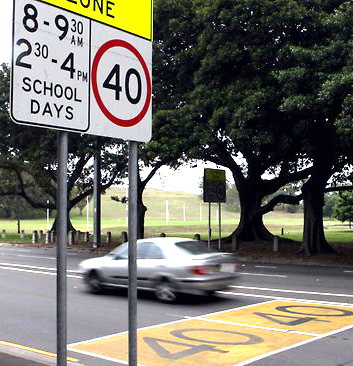Speed reductions seek safe returns
 Two states may adjust their speed limits in the name of road safety, with Victoria planning to extend 40km/h school zones and South Australia looking at bringing down some of its 110km/h highways.
Two states may adjust their speed limits in the name of road safety, with Victoria planning to extend 40km/h school zones and South Australia looking at bringing down some of its 110km/h highways.
In Victorian, speed reductions may extend to larger areas near schools and include shopping centres.
“At present, school 40km/h zones apply only where a school gate directly accesses a road,” Transport Minister Terry Mulder says.
“However, there are some areas where high numbers of pedestrians are crossing major roads to get to schools. These are the areas where lower speeds may be required during certain times of the day.”
VicRoads has release a series of guidelines to identify high-risk locations factoring the speed, number of school-related pedestrians, traffic volumes and the number of heavy vehicles. It says it will target 50 locations across Melbourne and the rest of the state. The planned increase to 40km/h zones will begin on a section of the Calder Highway in Bendigo.
“The changes mean that they will now have reduced speeds, through either electronic or static signs,” Mulder said.
“This will provide extra protection for these vulnerable road users and we will also be giving councils more flexibility to tailor the hours of operation for their 40km/h pedestrian zones to the times when they are needed most.”
Just across the border in South Australia, the state government wants to further reduce some of its 110km/h highway speed limits down to 100km/h.
It has trimmed the top limit of a number of roads in recent years, reacting a high number of fatalities.
But one SA council mayor says it is an arbitrary change that does not tackle the problem it sets out to face.
“Reducing speed limits is essentially free of charge. It looks and sounds like it will be effective, until you look at the facts,” says Kingston District Council Mayor Evan Flint.
“The Department for Planning, Transport and Infrastructure's 2012 Road Fatalities and Serious Injuries in SA shows that most people were killed or seriously injured in 50km/h to 100km/h zones [445 people], not 110km/hr zones [81 people].”
“Rather than reducing speed limits by 10km/hr, sealing road shoulders, building overtaking lanes, removing roadside hazards such as trees - or constructing barriers where objects cannot be removed - are all steps proven to minimise accidents on our roads,” Cr Flint said
“Safer cars, along with drivers who wear their seatbelts, are not fatigued, or affected by drugs or alcohol, also reduce the chance of fatal or serious injury accidents. Any preventable death or serious injury on our roads is a tragedy.”








 Print
Print